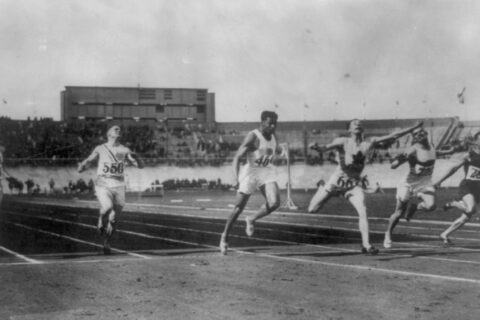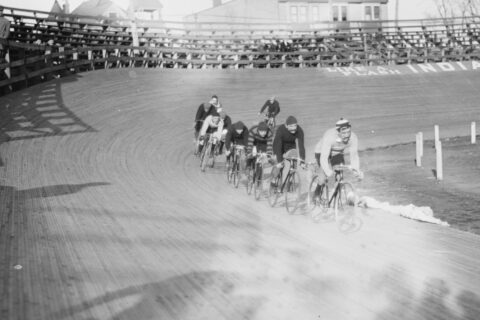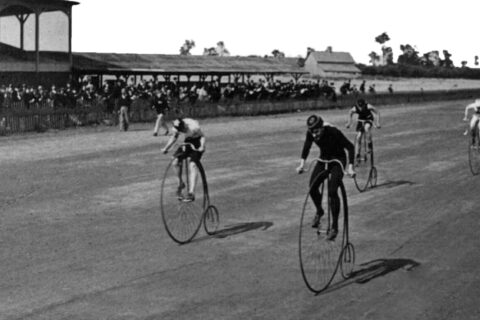Coach Bobby McGee has worked with a number of top professional triathletes and runners and is a firm believer that working on run form and mechanics can deliver not just better results, but greater enjoyment, fewer injuries, and improved speed and efficiency. In this video he outlines his “3 C’s” for coaching better run form and how you can bring them to your own training.
The 3 C’s of coaching better running form
Running form is not one size fits all. Coach McGee considers every runner as a study of one, particularly masters runners—from those who have logged decades of mileage to weekend warriors, and especially those who are just getting started.
Yet one thing is universal: stride length x stride rate = speed. And when it comes to running mechanics, you should always be looking to optimize the factors that govern this equation for performance gains.
Good running form is all about being connected and compact. An optimized cadence will be the result of dialing in these keys to running form. Coach McGee helps runners understand how the three C’s improve running mechanics:
Connected
This is the runner’s posture, a relaxed forward lean. The rib cage is “buttoned down,” not opened up, which can typically be diagnosed by an overly engaged lower back (and other key factors).
Compact
This is all about economy and contained efficient, one-plane movement. Running is a complex movement resulting in a linear motion across the surface, but from the arm carriage and elbow angle to the legs moving underneath the pelvis, it is all rotating back and forth around the spine. Moving forward with minimal deviation upward or side-to-side is the name of the game.
Cadence
Again, if the runner is connected, compact, and loading effectively, cadence takes care of itself.
This video was first published as part of Craft of Coaching Module 11, Coaching Master Athletes: Better Running Form Makes a Better Athlete, at Any Age.
Video Transcript
Bobby McGee 0:06
Hi, my name is Bobby McGee, I’m an endurance coach, have been doing so for over four decades, and I specialize in running mechanics and mental skills.
Bobby McGee (to athlete) 0:19
Everything’s there. That’s volleyball, that’s basketball, it’s all here. It’s never here. Okay? So that’s who you are when you run. All right? You’re in that position there. And it’s so easy to find it by just going [exhales sharply]. There it is.
Athlete 0:32
[Exhales sharply]
Bobby McGee (to athlete) 0:33
Forget it. Stay in that position. Mid-race, if you’re looking at the clouds, you’re going, “Uh oh, I’ve lost—I’ve popped my top. [exhales] Okay, now I’m looking 40 feet in front of me, that’s where I want to stay.”
Bobby McGee 0:44
So when it comes to applying some sort of sequencing of work with an athlete, I would look at what I call the three C’s. So the first thing I would look at is whether they are connected. In other words, are their arms, their shoulders, and more specifically, their torso, working in unison with their hips and their legs? So that’s the connection component. So the big one that I spend a lot of time on with—on the connection—is when they do what I call “popping the top” as that’s when that chest comes up, and they arch the low back, and they anteriorly rotate the pelvis.
Bobby McGee (to athlete) 1:29
So what you want to do is that the exhalation will set your head right. So if you look up at the clouds now, and you do that quick exhalation…
Athlete and Bobby 1:38
[exhales]
Bobby McGee (to athlete) 1:38
…see where your eyes go. Forty feet in front of you. That’s the ideal. Okay? Nothing moves except your thoracic spine. Just that, that’s all that comes down. Okay, so push down.
Bobby McGee 1:49
So that’s a disconnect of the ribcage from the pelvis. So that’s why that connectedness goes missing. So that gives me a cue straightaway where I can go and work on. The second one is, for them, is to look at how compact they are. So running is essentially—in distance running—it’s all about economy.
Bobby McGee (to athlete) 2:09
Then we get to the arms, right? So we know with your arms, you tend to have your elbows wide. So we want—when your elbows are wide, you’ve got a lot of work to do, so you lift up your shoulders. So now you’ve learned the scrunch-release drill; the further that we can get your shoulders away from your ears, the better. All right? And that’s that scrunch release. All right, so now the chest is down, you’ve freed up the upper arms. Now, the arms: You’ve got a glass tutu on there, all right? And you cannot break that glass tutu, you have to stay above it. So that’s where I want to keep that arm angle. Good.
Bobby McGee 2:41
All right, so instead of all of their elastic return and all of their energy driving them forward, they are wasting energy to stay in balance—they’re going side to side, or their arms are flailing, or their feet are externally rotated or internally rotated. All of those things fall in that compact area. And then the last one is—and it’s almost like the last one is an equals—if they get the connection right, and they get the compact right, then they can get their cadence optimized. And as a general rule of thumb, I would say with a masters athlete, whatever causes them to lose cadence is probably the biggest error they can make.
Bobby McGee (to athlete) 3:20
So last thing, put your feet down. Don’t drop into the ground, go to the ground. Like you’re running on river rocks or like you’re running ladders, you have to look where you put your foot down. Put, put, put the foot down as opposed to [makes noise] just letting it drop down. That makes everything softer and everything quicker; brings your cadence up.
Bobby McGee 3:45
All right, so whether they are over-striding or whether their posture’s too upright or whether they are utilizing that kinetic chain by dropping their arms down and slowing their cadence down; they are increasing load, they are decreasing economy, they are upping the risk of them getting injured all the way down the chain from the hips to the toes.



